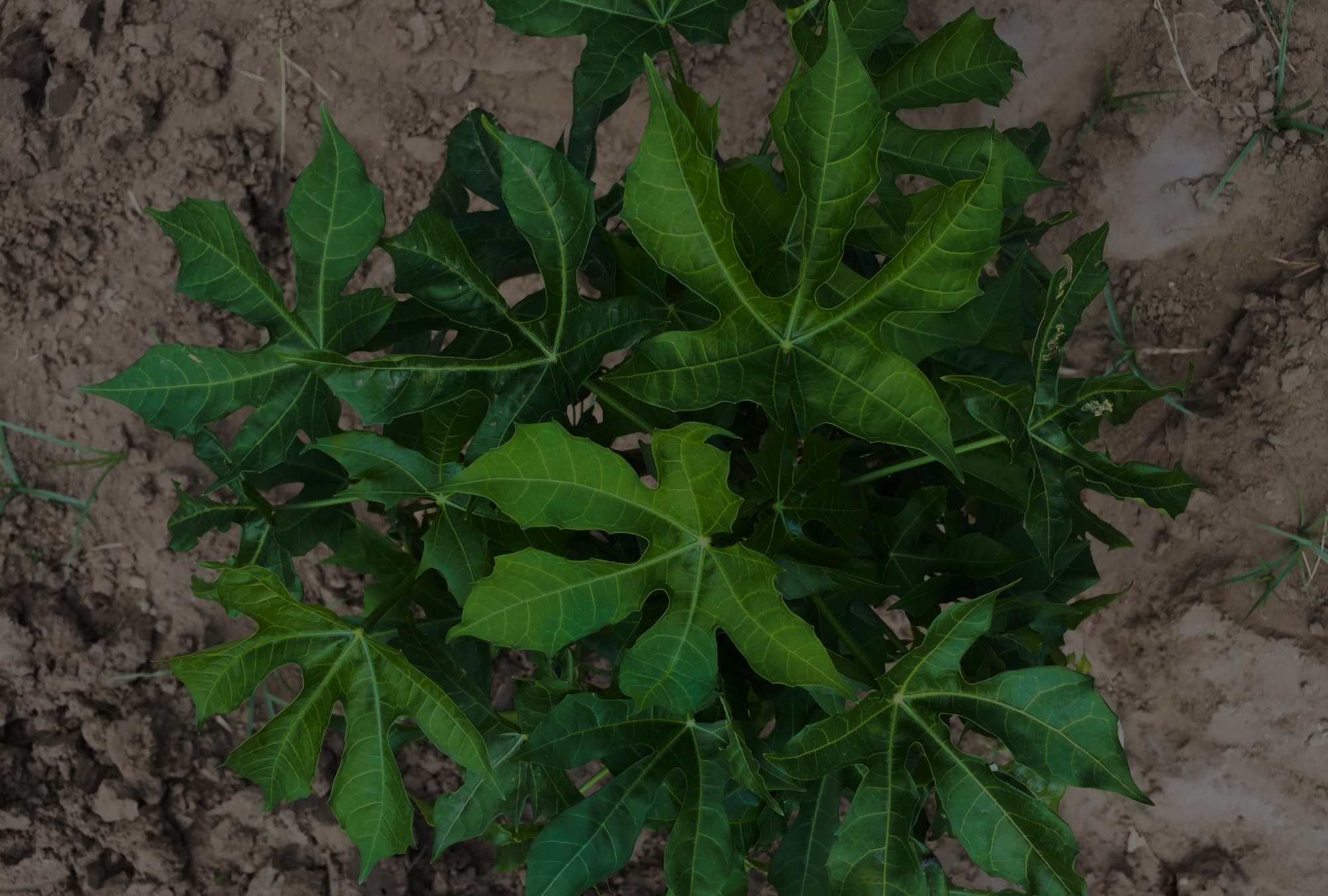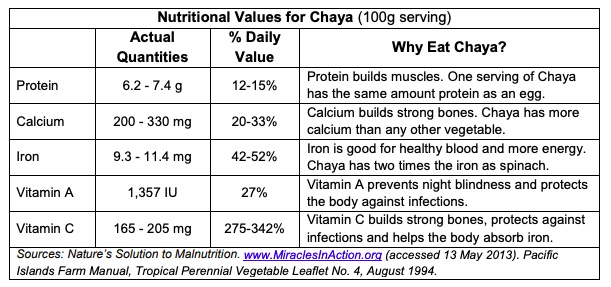

Chaya FAQs & Nutrition Information
Chaya FAQs
How is the Chaya tree used to provide nutrients?
Chaya is prepared by harvesting fresh leaves, boiling them for 15 minutes, and adding them to traditional dishes like sadza (cooked maize meal). There are also reports that after the Chaya has been boiled, the broth can be ingested for additional nutritional value.
How many trees does it take to “feed” a person?
Chaya is considered a nutritional supplement rather than a staple food source and can be cooked and eaten alone or, more commonly, added to other foods. One tree can provide 3 servings of supplemental nutrients per day.
What part of the tree is eaten?
The leaves and stems can be boiled or dried.
How long does it take for Chaya to grow from a cutting to a viable tree that can be harvested?
Cuttings can be harvested from a Chaya tree after approximately 3 months from planting, but it takes 6 months to a year for the tree to be fully mature. Chaya shrubs often grow to 3 m (10 ft) in height, and 2 m (6.5 ft) in width. Rooted plants are easier to establish and are quicker to establish than cuttings. Once mature, up to 60% of the leaves can be removed for consumption without harming the tree, and it will then continue to reproduce.
How much water does it take to grow the tree?
Native to Mexico, Chaya is considered to be drought resistant. The cuttings need to be watered when established, but mature trees can go months without water without dying.
Are the trees being given to families or being planted in community gardens?
Both! We are training women and giving rooted plants for their families and also establishing co-op gardens connected to the clinics in the communities.
How will the trees be distributed?
At each site 10 women farmers are selected, trained, and given 200 rooted Chaya seedlings each. Each woman selects 10 friends to give 10 seedlings to each with training. 2,000 to women at each site, 500 planted at each site center.
Exponential growth is targeted at each site by encouraging every woman farmer in the project to give 10 trees to 10 friends with training when their own trees reach maturity.
Why haven’t we heard anything about this tree before?
Chaya is beginning to catch on with international development workers largely because of the efforts of ECHO (Educational Concerns for Hunger Organization) in Florida. Native to Mexico, it is growing in popularity in Africa and has been successfully established in Indonesia as a supplemental source of nutrition.
What has already been done with this “miracle” tree?
Six Chaya cuttings were mailed to Indonesia in 1998 and today there are well over 10,000 trees providing nutritional supplementation to Indonesian families. Through this campaign, MATTER is working toward similar impact in Zimbabwe, with even broader distribution. See video:
Experiencing a ‘Superfood Movement:’ The Story of Chaya in Indonesia – YouTube
Chaya Nutrition Information
Chaya out-performs most other green leafy vegetables nutritionally. The leaves are very high in protein, calcium, iron, carotene and vitamins A, B and C. The amino acids in chaya are well balanced, which is important for those who have a diet low in protein and for children and pregnant or nursing mothers. Vitamin C ends up in the cooking water when chaya is cooked, but if one drinks the broth in addition to eating the leaves, 25 grams of chaya leaves can meet an adult’s daily requirement for vitamin C.
(Information excerpted from ECHOcommunity.org )
According to USAID, Chaya is rich in essential nutrients:


Moreover, Chaya is said to have the following health benefits:
- Improves blood circulation
- Helps digestion
- Improves vision
- Prevents varicose veins and hemorrhoids
- Lowers cholesterol
- Helps reduce weight
- Prevents coughs
- Augments calcium in the bones
- Decongests and disinfects the lungs
- Prevents anemia
- Improves memory and brain function
- Combats arthritis
- Improves glucose metabolism and prevents diabetes
“I would consider chaya to be one of the five most important underutilized food plants …because of its ability to thrive in both arid and rainy regions, its little need for care or extra fertility, its lack of insect or disease pests, its high production per square foot, and the exceptional nutritional value of its cooked leaves.”
– Dr. Martin Price, co-founder of ECHO and former head of ECHO’s Agricultural Resources Department
Additional Information
